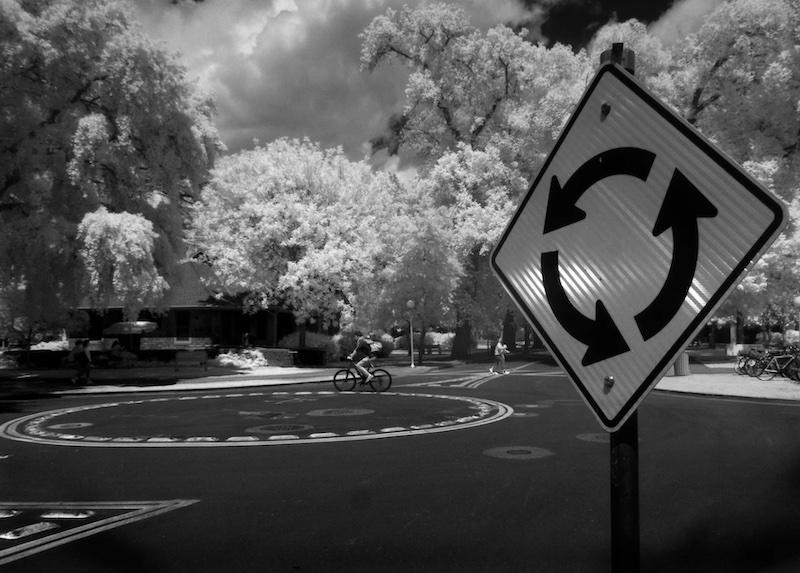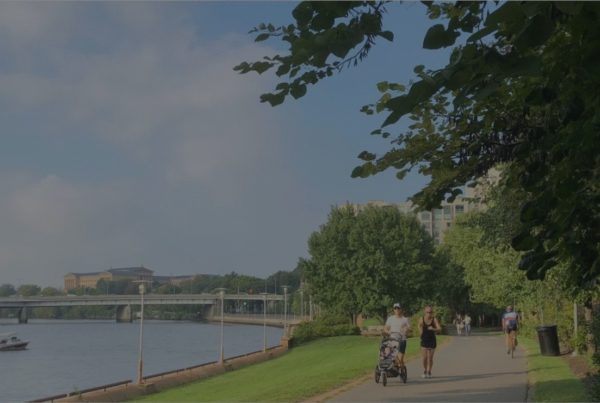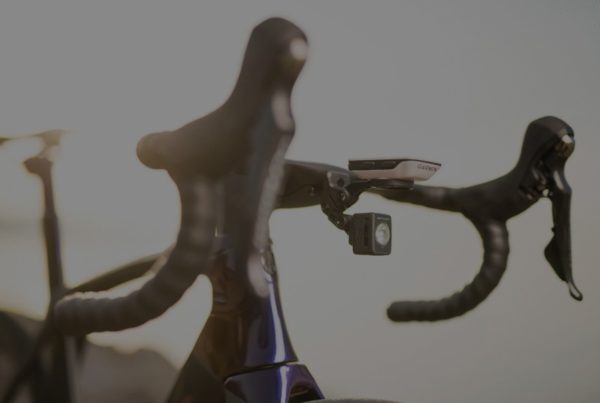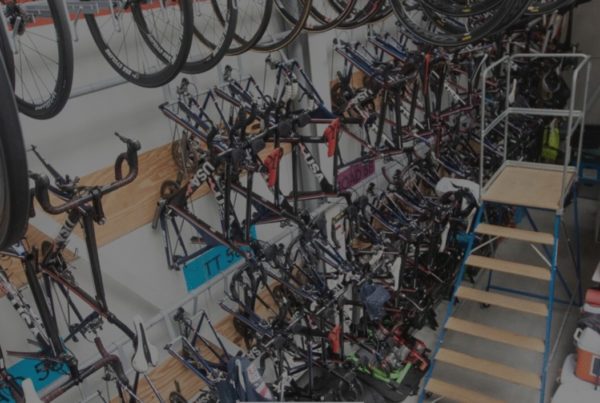Attorney Bob Mionske examines whether roundabouts or traditional traffic intersections are more safe for cyclists.
Road racers in Europe have a lot to contend with. Paris-Roubaix is famous for its mud, cobblestone sections and rough hazardous terrain, but it is by no means the only dangerous and difficult racecourse on the yearly calendar for racers. In fact, difficult conditions and dangerous roadways are common in professional racing across the entire season of races.
And it’s not just those rough roads, competition and challenging weather that the riders have to contend with during the race. There’s something far more mundane that still draws the disdain of the racers:
Road Furniture
In the 2019 Tour de France, there were over 3,500 cumbrances to slow and direct traffic in the form of barriers, medians, roundabouts, median strips, speed bumps, traffic circles and other traffic design structures designed into the roadways-cum-road courses. One of the most common of these road furniture designs is the roundabout.
Former pro racer Jacob Rathe says, “Training-wise, they are great not having to stop at intersections. Left turns do not require waiting to cross traffic. Racing, they are a disaster. Here in the U.S. some drivers are confused by the roundabouts and don’t enter when they see a cyclist, which isn’t the plan.”
Michael Barry, former pro racer and author of Le Metier and Inside the Postal Bus, agrees that roundabouts “are much better for training. Traffic flows smoothly and people generally pay more attention and you are only giving way to one direction.”
Roundabouts
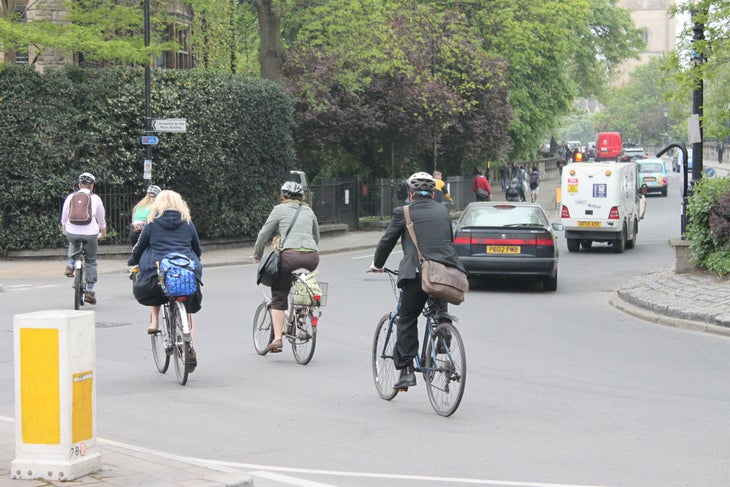
Cyclists may find roundabouts to be safer.
Photo: Flickr Creative Commons
So, with the problems that roundabouts can cause in a European road race, we can all be thankful that roundabouts aren’t so common here in the U.S.—right?
Not so fast. There’s a fundamental difference between a once-a-year road race and day-in-day-out road riding conditions in traffic. Navigating at warp speed through blind turns past all manner of road conditions has sometimes ended in tragedy and is part of the world of bike racing. Many have rightfully complained and asked for better safety measures. While radios carried by racers often warn of these hazards, the amount of road furniture encountered by racers in Europe is large (especially in northern Europe), and still increasing as governments continue working towards developing safer traffic systems (albeit, safer traffic systems that are more dangerous to the racers).
Safely commuting through intersections is where roundabouts really shine for day-in-day out road users of all kinds in Europe, and this explains why there are so many in Europe. Comparing modern roundabouts vs. intersections controlled by traffic signals, it’s been found that non-fatal vehicle crashes are reduced by 38 percent, and fatal vehicle crashes are reduced by a whopping 90 percent. The reason is simple—speeds in roundabouts are slower by design, and with those slower speeds come fewer crashes, and especially, far fewer fatal crashes.
So what is it that makes roundabout speeds slower? In a modern roundabout, there are no traffic signals, and no stop signs. To enter the roundabout, a vehicle is required to yield to any vehicles already in the roundabout. Because there are no traffic lights, drivers must use their own judgment about when it is safe to enter, and when to yield, and it makes them more cautious entering the roundabout.
At intersections with signals (like those we are most familiar with in the U.S.), drivers may be less cautious entering the intersection, relying on the traffic light, rather than conditions, to tell them that it is safe to enter. A classic example would be the driver who makes a left turn at a green light, without noticing that an oncoming cyclist has the right of way (left hook).
Speed entering the intersection, which can take the form of jackrabbit starts as the light turns green, and “beat the light” races to get a wheel into the intersection before the light turns red, also makes intersections less safe. The results speak for themselves—more than 50% of all traffic collisions occur within or near intersections, resulting in 10,000 fatalities every year.
Modern roundabouts are superior to intersections by other important metrics as well: Modern roundabouts cost less to build and maintain, they significantly reduce traffic congestion, and are better for the environment, with reduced congestion resulting in fewer carbon emissions and reduced fuel consumption.
And for cyclists, how roundabouts function should seem familiar—instead of stopping at a stop sign before entering, drivers (and cyclists) slow and roll. This is exactly how “Stop as Yield” works, but with a far superior, safer intersection design. By every metric, roundabouts beat signalized intersections hands down.
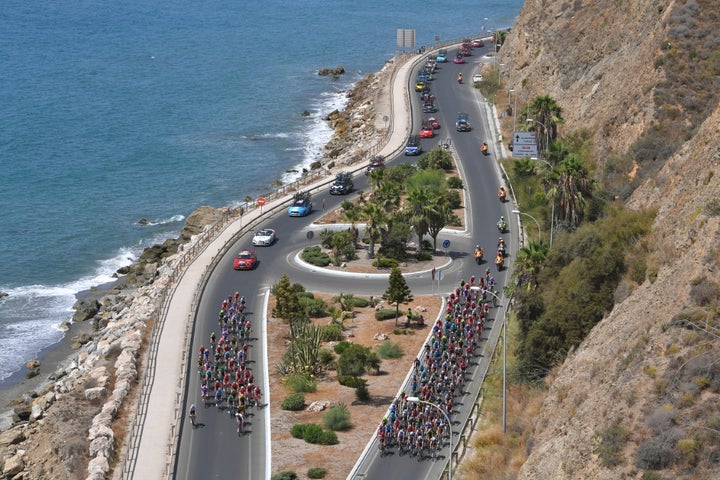
The peloton was split by a median roundabout along the coast.
Photo: Tim de Waele/Getty Images
Maybe.
In studies, results for cyclists are mixed, with some studies showing safety improvements, and other studies showing increases in car-on-bike crashes. But the difference between a roundabout that is safer for cyclists, and one that is unsafe, appears to be linked to design variables. Designs that encourage higher traffic speeds and lane changes are less safe for cyclists. Designs that slow traffic speed and have only one traffic lane, or a traffic lane and a separated cycle path, are safer. And for roadies, who would probably be comfortable taking the lane, the benefits (in addition to improved safety) are that they would be able to avoid coming to a stop at the roundabout in many instances, as well as the tickets associated with not coming to a stop at a stop sign.
The pros and cons encountered by bicycle lawyers appear to match the results of the studies. Lauri Boxer-Macomber, a bicycle attorney with the Bike Law Network who lives in Portland, Maine says “Roundabouts are not only safer for bicyclists than signalized or signed intersections, they are proving to be better for everybody. And now, cyclists are able to safely enter and exit the intersection via roundabouts while maintaining speed, continuity, and momentum. It’s been a game changer for the better.”
However, San Francisco Bay Area bicycle attorney Miles Cooper sounds a note of caution that design is critical to the safety success of roundabouts. “Properly implemented, roundabouts are a wonderful way to smooth out traffic flow and make intersections safer for cyclists, pedestrians, and drivers. But traffic engineers need to listen to input from all road users when constructing them. Cycling advocates voiced concerns about the car-centric nature of a Lafayette, California roundabout, and that its design favored auto speed over bike safety. Unfortunately, a cycling legend known for his Mt. Diablo rides was struck by a driver in the roundabout after traffic engineers decided not to listen to the cycling community’s concerns.”
And yet there are only 4000 roundabouts in the U.S., and over 300,000 signalized intersections. In contrast, there are over 30,000 roundabouts in France, and 25,000 in the UK. Which raises the question—why are there so few roundabouts here in the U.S.?
The simple answer is that Americans don’t like them, but that begs the question—why? One possibility is that Americans have had bad experiences with traffic circles, which preceded modern roundabouts.
Roundabouts are not traffic circles
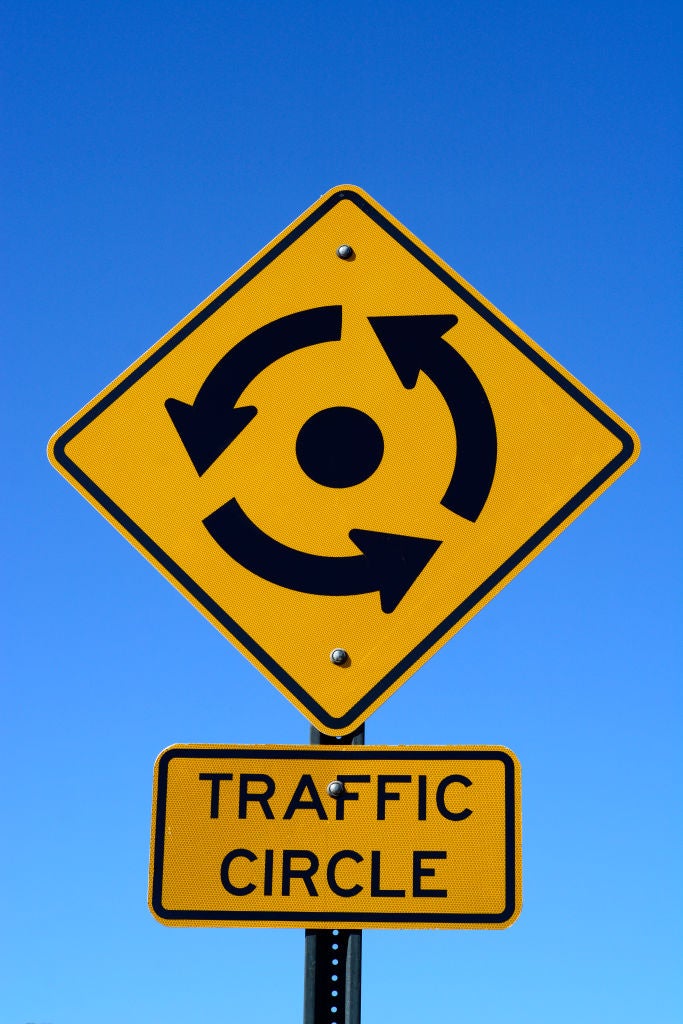
There’s a big difference between a traffic circle and a roundabout.
(Photo by Robert Alexander/Getty Images)
These early traffic circles were characterized by higher-speed entry in a straight line, and higher-speed merging and weaving, which led to more traffic collisions. This is because a traffic circle differs from a roundabout in critical ways. A traffic circle is a series of “T intersections” with a circle road. Each “T” intersection may be controlled differently.
In contrast, a roundabout is a series of “crossing intersections” where the entering traffic is controlled by yield signs. As a cyclist, you can ride into a roundabout without unclipping and continue on your way. If a motorist messes up, they won’t collide with you in a perpendicular direction, meaning less severe impact.
The modern roundabout resolved the issues created by traffic circles by changing the angle of entry, and requiring drivers entering the roundabout to yield to traffic already in the roundabout. Nevertheless, Americans who remember the problems with traffic circles may transfer their negative memories and feelings onto the newer designs of modern roundabouts.
Another reason is that Americans are more familiar with signalized intersections, and therefore may simply feel more comfortable navigating through them. And conversely, because there are so few roundabouts in the U.S., Americans may feel less confident about trying to navigate their way through a roundabout.
But surveys show that once Americans experience using a roundabout, their attitudes change. It’s obvious that unfamiliarity is a stumbling block to acceptance of roundabouts, and the more roundabouts there are, the more people become comfortable with them. The benefits of roundabouts are undeniable, and speak for themselves, but personal experience seems to be even more important in changing minds and allaying the fear of the unfamiliar. To borrow a phrase, the answer appears to be “Build it and they will come around.”
Is the U.S. ready for this sensible road change?
Roundabouts may be the bane of European racing, but they can be a safer and more efficient way for cyclists to travel, rather than being a sitting duck at a long, controlled intersection, and I for one think that is a good exchange. What do you think?
Research and drafting assistance by Rick Bernardi, J.D.
This Legally Speaking article, Rider Safety in Roundabouts vs. Intersections, was originally published on VeloNews on June 29, 2021.
Bob Mionske is a former competitive cyclist who represented the U.S. at the 1988 Olympic Games (where he finished fourth in the road race), the 1992 Olympic Games, as well as winning the 1990 national championship road race.
After retiring from racing in 1993, he coached the Saturn Professional Cycling team for one year before heading off to law school. Mionske’s practice is now split between personal-injury work, representing professional athletes as an agent and other legal issues facing endurance athletes (traffic violations, contract, criminal charges, intellectual property, etc.).
Mionske is also the author of “Bicycling and the Law,” designed to be the primary resource for cyclists to consult when faced with a legal question. It provides readers with the knowledge to avoid many legal problems in the first place, and informs them of their rights, their responsibilities, and what steps they can take if they do encounter a legal problem. If you have a cycling-related legal question please send it to Bob, and he will answer as many of these questions privately as he can. He will also select a few questions to answer in this column. General bicycle-accident advice can be found at bicyclelaw.com.
Important notice:
The information provided in the “Legally Speaking” column is not legal advice. The information provided on this public website is provided solely for the general interest of the visitors to this website. The information contained in the column applies to general principles of American jurisprudence and may not reflect current legal developments or statutory changes in the various jurisdictions and therefore should not be relied upon or interpreted as legal advice. Understand that reading the information contained in this column does not mean you have established an attorney-client relationship with attorney Bob Mionske. Readers of this column should not act upon any information contained in the website without first seeking the advice of legal counsel.

